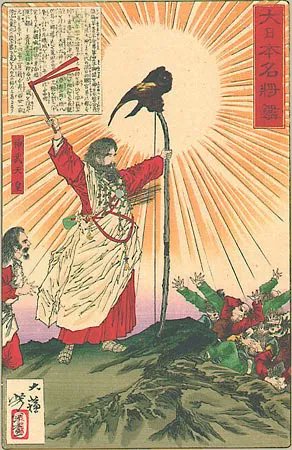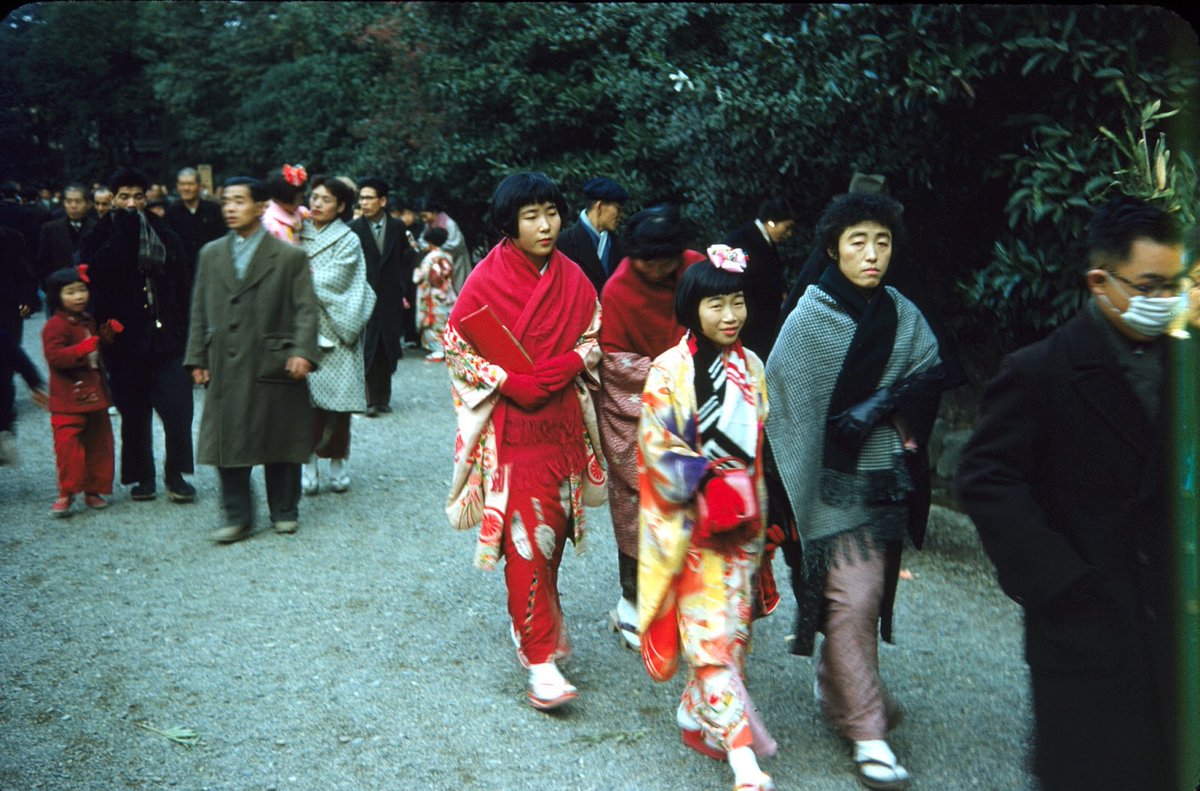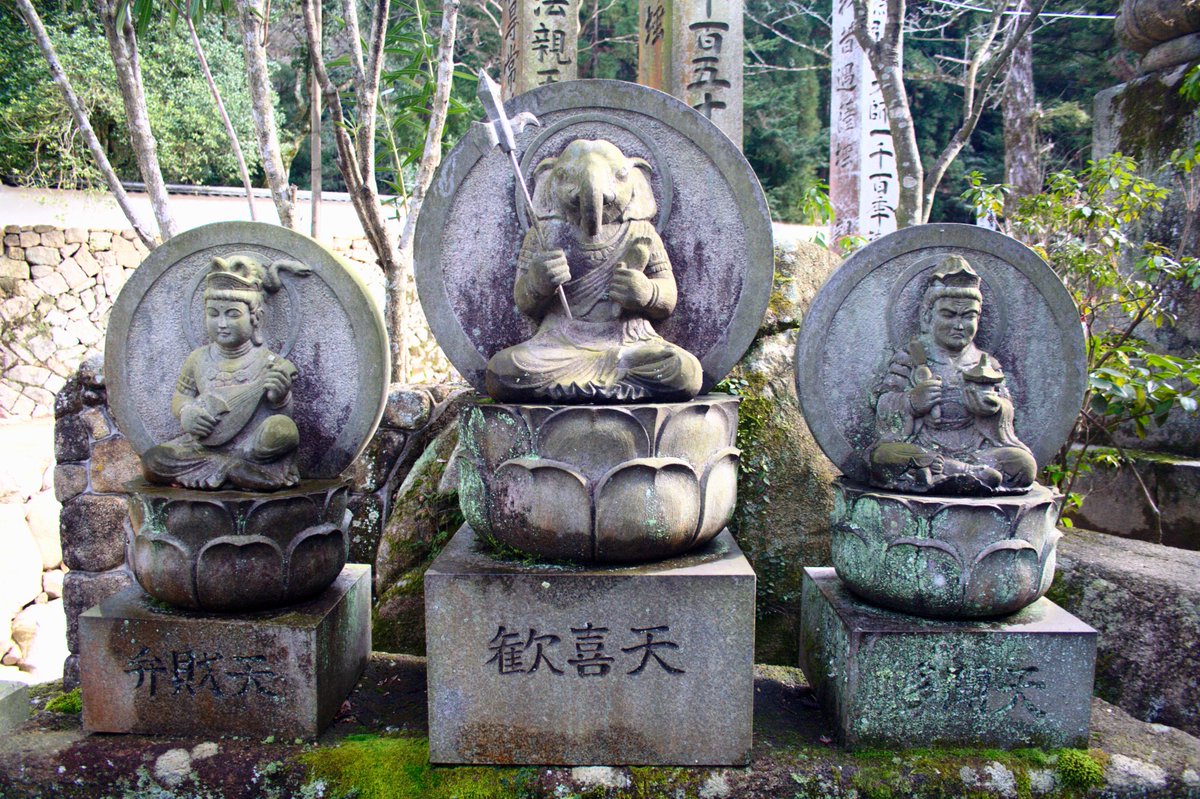Hey. Let's talk modern occultism in Japan, because anime absolutely does not do it justice. Short 🧵 for #FaustianFriday
August, 1945. Emperor Hirohito announces the surrender of Japan to the Japanese people via radio, also stating he was not divine. Why?
August, 1945. Emperor Hirohito announces the surrender of Japan to the Japanese people via radio, also stating he was not divine. Why?

The misconception given to the US military by anthropologists and scholars was the Japanese people believed the Emperor was divine, due to his descent from the kami Amaterasu, effectively the goddess of heaven.
Problem is, that wasn't true, no one in Japan thought that. And yet.
Problem is, that wasn't true, no one in Japan thought that. And yet.

This had a *resounding* effect on Japanese spirituality in the coming decades. In 1945-1946, State Shinto is abolished. State Shinto, a product of the Meiji Restoration to establish a European-style state religion, took the indigenous beliefs of Japan and centralized them. 

While consolidating spiritual power, it also demonized "foreign" religions which included Daoism, Buddhism, and of course Christianity, which had a stronghold in Nagasaki (and still does). The abolition of State Shinto reversed this trend and decentralized Shinto (now an issue). 

In the wake of WW2, Japan faced decades of economic rebuilding and for that matter, an issue of identity as it modernized. A battle for the soul of Japan was taking place as communism and capitalism collided in Japan's intellectual and spiritual circles. 

Most chose to return to what they were doing anyway, not being "religious" but passively following the spiritual trends of their country: Shinto lived religion, Buddhist afterlife, occasional interaction with other faiths.
Others, like Yukio Mishima, chose a more nativist slant.
Others, like Yukio Mishima, chose a more nativist slant.

This drew heavily on the imagery and faux-ideas of Imperial Japan, and culminated in Mishima, a writer with strong opinions and respect from a lot of corners in Japan, to attempt a semi-fascist coup in 1970, leading to his suicide upon realization it had failed. 

Why is this important?
Because at the heart of Mishima's ennui was the idea Japanese identity had been gutted and neutered. Japanese writers since the Meiji period had long flirted with nihilism but the 60s and 70s saw a massive rejection of Japanese norms by youngsters.
Because at the heart of Mishima's ennui was the idea Japanese identity had been gutted and neutered. Japanese writers since the Meiji period had long flirted with nihilism but the 60s and 70s saw a massive rejection of Japanese norms by youngsters.

It's no coincidence that at the same time new age and occult explosions took place in the US and UK it took place in Japan as well. Japanese kids explored religions with little to no direct history in Japan, Hinduism (not filtered by Buddhism) and Judaism (not filtered by Jesus) 

I forget the number, but there is a massive explosion of cults and movements in urban Japan during this time drawing on these foreign sources. Some are relatively peaceful, some are downright apocalyptic; many turn out to be scams (shocker, I know). 

Aside from religions and spiritualism, science fiction proved highly influential to these new cults, as they did in Japan: you see parallels to star seeds, alien abductions, and sometimes you just see those things transferred to Japan. ESP especially takes off. 

The most famous of these? Aum Shinrikyo, a Hindu-Abrahamic cult that grew to be apocalyptic in nature, stating only followed would be spared a volcanic apocalypse.
In 1995, they committed the infamous sarin gas attack in Tokyo's subways.
In 1995, they committed the infamous sarin gas attack in Tokyo's subways.

Beneath all this is the return to interest in Japanese spirits: you know them as yōkai, obake, bakemono, demons, oni. Why did they take off? A simple answer: manga! Japanese popular culture revitalized the art of Japanese popular folkore and expanded it. 

The 1980s took this another step. Combining Mishima's search for Japanese identity, the explosion of foreign-influenced cults and occultism, and the revitalization of yōkai studies, Teito Monogatari is released in 1985, coupling these with conspiracy theories and politics. 

Teito Monogatari is a seminal moment in Japanese pop culture, reviving interest in onmyōji (Japanese magicians) and in general larger Daoist trends. Manga, movies, anime, video games: these soon are unleashed on the world at-large.
M. Bison is based on Teito Monogatari's villain

M. Bison is based on Teito Monogatari's villain


The 1995 sarin gas attack by Aum Shinrikyo, coupled with their murder of former members and their families, has led to a major backlash in Japan against cults, but this attitude is a bit older: mirroring the Satanic panic, moral panics about ghosts had come in waves since 1979. 

Cults are still a thing in Japan—the recent assassination of former PM Shinzo Abe was allegedly due to a man's mother being involved in the Unification Church, aka the Moonies—and the pop culture craze never went away. If you've seen anime, you've seen this at work. 

Blood types take on an occult meaning in Japan and because of that East Asia, borrowing from the revival of Chinese-derived interest in blood. Blood types determine personality, love prospects, etc. effectively a horoscope: that's why every anime lists characters' blood types. 

We often think of Japan as either highly modern or deeply traditional, when in fact, like the rest of the world, they are a fusion and have plenty of new traditions, new beliefs, new religions born from old things and new things both.
And with that, 終わり
And with that, 終わり
lol once again, not short. If you want further information, check out the alt descriptions on the images! I provide further commentary in addition to descriptive text. My primary source on this is David Kaplan's "Cult at the End of the World," which is solid.
• • •
Missing some Tweet in this thread? You can try to
force a refresh

 Read on Twitter
Read on Twitter








